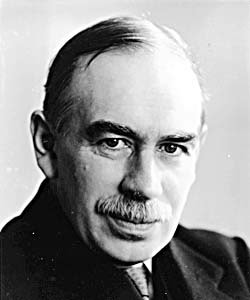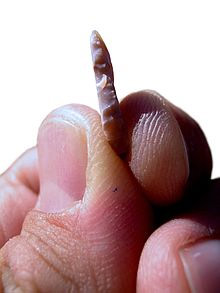Hayek and Friedman’s attempts to use evolution as a model for capitalism is fatally flawed. The correct model from nature is ecology. With an ecological base for the “survival of the fittest” principle, observations match predictions in the real world. Nevertheless, evolution can be a useful to model the long-term changes in economic forms (the equivalent of species, or families of economic systems).
Natural selection in evolution works at the genetic level, is mediated by the individual and we see it operationally at the species level. Because of the way evolution works, it builds on the inventions of ancestral forms. Evolving new species must use the tools provided by the extant organism, it cannot use other organisms and it can only invent new structures by modifying or eliminating old ones. Evolution takes place in the real world in an ecological context. Evolution takes an enormously long time, thousands of years is the usual minimum time frame to create a new species. The evolution of entirely new groups of species (genera, families, etc.) requires almost unimaginable periods of time, stretching into millions of years. During time frames of millions of years, the entire world climate conditions can later dramatically. Entire continents can move to separate large assemblies of species, separating populations so multiple groups of animals and plants can be undergoing speciation at the same time.
In a modern context, genetics is based on genes located on strands of DNA in cells or chromosomes. During reproduction the genes are transferred to the offspring and expressed in the characteristics of the offspring based on a mix of parental contributions and the environment.
If economics and evolution have analogous processes, we need to find the equivalent of DNA. Economic competition in an ecological model acts on individual entrepreneurs who are living, breathing, reproducing people. As an hypothesis, let`s start by assuming economic and biological DNA are the same even if the part of a person`s life they will be controlling is a small part of the whole. It is a given that every single person on the face of the planet has his or her origins in a small population of Homo sapiens clustered together in desperation somewhere in South Africa trying to scrabble a living out of a small hospitable location away from the worst of the cold and drought about 100,000 years ago. As few as 10,000 modern humans is likely to have been the entire world population. Professor Stanley Ambrose of the University of Illinois at Urbana-Champaign suggests that this very difficult time was when human grouping shifted from the primitive “troop” to a “tribe” and the small foraging groups became larger societies. The first sign of large-scale cooperation beyond families. During this transition, system of gift-giving secured future favours in times of need. This same system remains today with the South African !Kung San hunter gatherers.
Some 70,000 years ago, specialized stone tools emerge. These small “microliths” are flakes or blades of stone with a specific use.
These very diverse tools indicate humans beginning to use exactly the right tool for each task — the beginnings of a primitive industrial age and the beginning of trade over extensive areas.
Humans were also leaving Africa and taking this knowledge and industrial trade system with them. By 90,000 years ago people were in the Near East and by 40,000 years ago were spreading through Europe. It took until 12,000 years ago to reach the New World.
This is the beginning of the Neolithic as people are beginning to shed the full nomadic life and settle down in at a partially agricultural setting. Villages with markets spring up and individual enterprise begins. Three of four thousand years later, the villages are large enough that they have multiple families and a government of some kind. it is possible to begin to acquire and keep property — a no-no in nomadic life. The village develops more-or-less permanent infrastructure and the leader or leaders typically are deemed to own everything and everybody. In some cases this is to the distinct benefit of the leader, but in others the leader has the vision to ensure everyone has a comfortable life-style. In both cases the leader is working to prevent the desire for private ownership, at one extreme for his or her singular benefit, at the other for the benefit of the entire community. By five thousand years ago, great wealth is accumulated by the rulers of some societies. Central control of agriculture, production of raw materials is carried out in small factory-like settings, and finished products are created by artisans using the processed raw materials. The economy is still controlled by dictatorial governments.
Two thousand years later around the Mediterranean Sea, a few countries have a different kind of government. Early democracies show up where some ordinary people can hold wealth, vote on some government representatives, and pay taxes. The first glimmerings of capitalism show up with several merchants banding together to form the equivalent of a small business in today’s terms. The idea does not spread quickly, but maintains an on-again off-again hold in the Mediterranean area.
About 2068 years ago, the Roman explorers arrived in what is now Britain. Within 100 years Rome had begun to take over and would remake Britain into a dictatorial Roman empire. Four hundred years later, the Romans were gone, but the imperial form of dictatorial government remained with the general population functionally semi-slaves or “serfs” who could not amass wealth. It took nearly 1000 years for the feudal system to die under the pressure of revolution by the general public. But when it did, the serf class dwindled rapidly as agriculture became the mainstay economy of the country with individuals able to own material goods, property, and conduct private transactions.
Another 300 years and thinkers like John Locke were describing the rules of natural law and its application to the economy. Capitalism had not only arrived, but it was being codified with the basic rules for its spontaneous ordering of chaos being the rights of individuals to life, liberty, and property. Competition, supply, and demand of materials determined the success or failure of enterprises and the cost of goods. Adam Smith and his colleagues captured some of Locke’s thinking in the US constitution “Life, liberty, and the pursuit of happiness.” The writers omitted the right to property in the tagline, and that remains only a semi-solid right in the US. Governments can confiscate property.
Nearly 200 years later in the mid 1800’s Darwin described and documented his concepts on the evolution of species. This concept was seen to be similar to the spontaneous order of capitalism derived from the chaos of the marketplace. Species arise spontaneously from chaotic nature from only the action of a process Darwin called “natural selection.”
At about the same time, early capitalism was under attack by John Maynard Keynes. Perhaps the most influential economist of his era, he introduced “government managed” capitalism.  His 1936 book, “General Theory of Employment, Interest and Money,” challenged the laissez-faire capitalism of Adam Smith. Keynes declared that governments should intervene in times of market distress and this declaration has influenced Western democracies since the 1930s, including the astounding interventions of modern US and Europe. His general theories about managing free markets on a global scale are considered the foundation of macroeconomics. He also described the principles that now underpin the international banking system. Politics was never divorced from economics, but this brought government back into it in a big way.
His 1936 book, “General Theory of Employment, Interest and Money,” challenged the laissez-faire capitalism of Adam Smith. Keynes declared that governments should intervene in times of market distress and this declaration has influenced Western democracies since the 1930s, including the astounding interventions of modern US and Europe. His general theories about managing free markets on a global scale are considered the foundation of macroeconomics. He also described the principles that now underpin the international banking system. Politics was never divorced from economics, but this brought government back into it in a big way.
Not long after, Friedrich Hayek put this all together, dismissed Keynesian economics and went back to the earlier concept describing the operation of capitalism and the free market as the same basic model as Darwinian evolution, capturing the concept in the phrase: “survival of the fittest” in the face of market place competition. Hayek who died in 1992 required the same rights as Locke described so many years earlier in what he termed natural laws: life, liberty, and property. In the mid 1950’s Milton Friedman at the Chicago University supported the views of Hayek and denied the value of Keynesian economics.
So today, the world of economics and politics are a scrambled up mix of free market, capitalism, Keynesian economics, and who knows what.
This is the basic story of an evolutionary process with the future species of economy unknown and still evolving. The DNA of the economic evolution is the DNA of the entrepreneurs and thinkers who spontaneously began to operate in new and innovative ways through several hundred thousand years. Doubtless the now familiar “species” of economies are the few successful evolutionary experiments that have survived through the ages. Today we see a struggle of a number of economic species in competition, ranging from completely free markets to completely government controlled economies in dictatorships and at least conceptually in Marxist egalitarian communism.
So we could think of evolution as a model in economy, but like natural evolution in biological systems, it takes place over very long periods of time, has an ability to reproduce itself into separate and identifiable daughter species, is held together by the thread of DNA, does not have any arbitrary final end goal, and continues on today. Like biological evolution, we will not really know what the next economic species will be until it appears. However also like evolution in nature, there are lessons to be learned about how it operates and where it is going. Finally if we use this understanding carefully, artificial economic selection forces could be applied to develop “breeds” of economic species from the existing natural economic species, just as artificial selection has been used in biological evolution with wolves to create the many breeds of dogs, pigeons, and goldfish.
What about the poor undefended workers? That’s in another blog.

